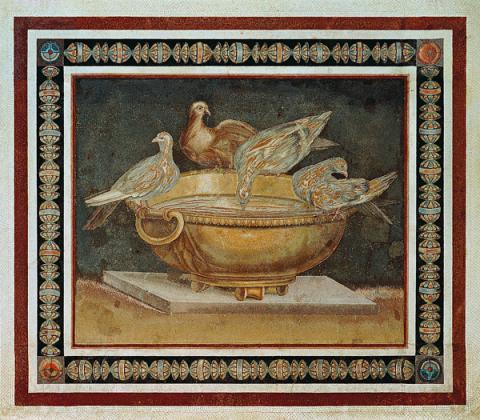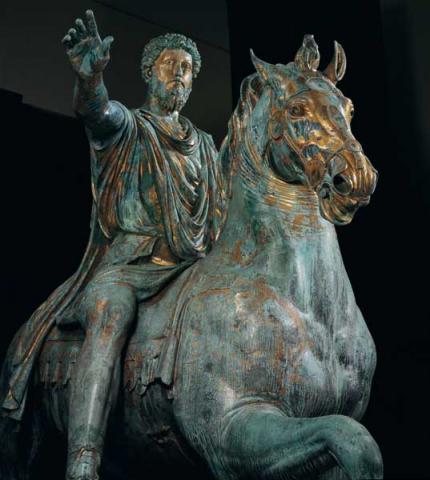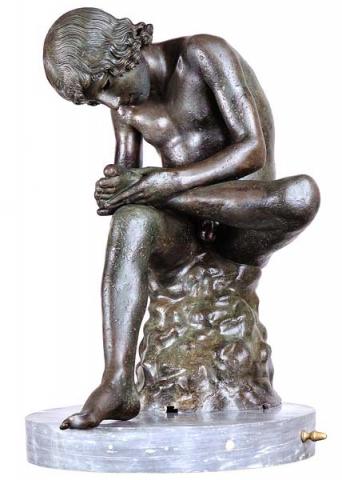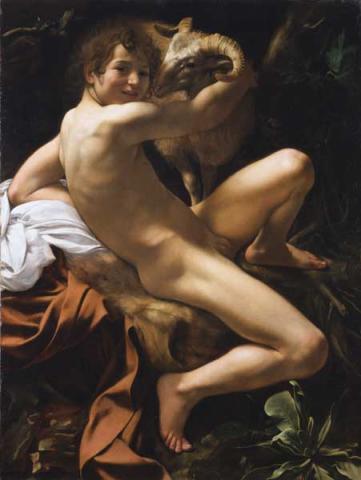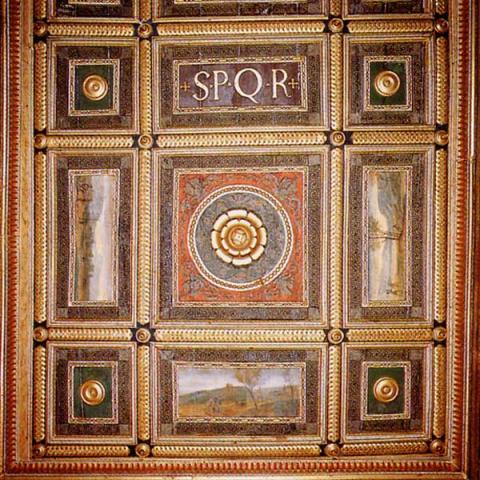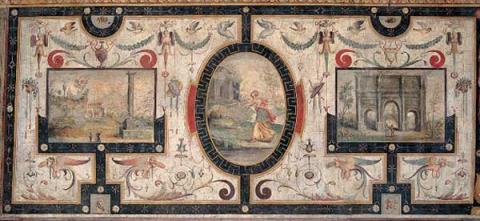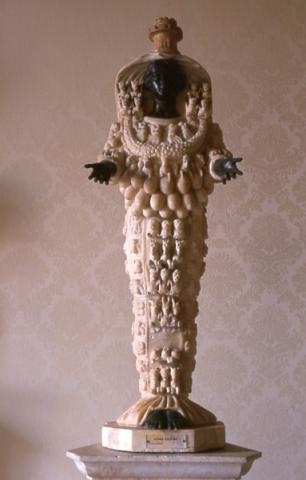Hall of the Eagles
The fine wooden ceiling features painted landscapes alternating with carved gilded rosettes.
The frieze below, of the same period as that in the Hall of the Geese, features a series of panels portraying views of Rome, and oval medallions showing minor episodes from the history of Republican Rome.
A small bronze and marble statue is a small-scale replica of the Hellenistic statue from the Temple of Artemis at Ephesus embellished with symbols of fertility and heads of animals.
Two marble eagles give the room its name.
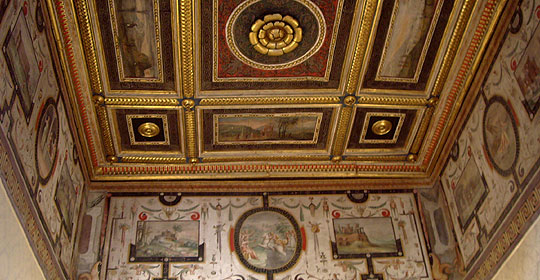
The name of the room comes from the sculptures of the two Roman eagles placed on two cipolin columns.
The decoration of this small and sophisticated room dates back to the pontificate of Pope Paul III Farnese (1534-1549).
In the painted frieze on the walls, precious grotesques frame a view of Rome with ancient monuments. The fresco is close, for stylistic and iconographic reasons, to those painted in the same period for the pope in Castel Sant'Angelo and attributed to Cristofano Gherardi (1508-1556). One of the panels depicts a view from the Capitoline Square, showing the image of the Capitol in the mid-sixteenth century. The statue of Marcus Aurelius is placed in the centre of the square: it was transferred from the Lateran to the Capitol in 1538 at the behest of the same Paul III. One can distinguish the Senatorio and Palazzo dei Conservatori in their fifteenth century look, not yet renewed by the subsequent Michelangelo’s work.
The central panel of beautiful wooden ceiling, carved in the same years of the frescoes (1540-1550), bears the inscription S.P.Q.R. (Senatus Senatus Popolusque Romanus), a formula referring to the authority of the Senate and the People of Rome and since the Middle Ages part of the coat of arms of the City of Rome. In the other panels, there are small landscapes framed by gilded carvings of great value.
Leaning against a wall, on an ancient base, there is the Diana of Ephesus, a copy of the cult statue of the shrine of Artemis at Ephesus, a marble sculpture with bronze inlays, enriched by the presence of flowers, bees and fertility symbols.


























